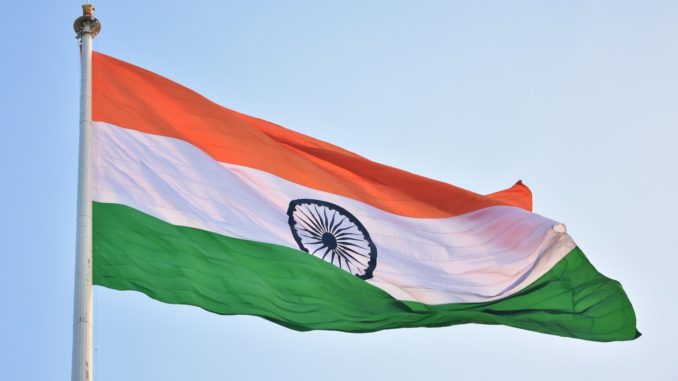
Despite a recent high-level meeting, India and China are at a stalemate after their armies blamed each other for firing in the air on the contested border in the desert of Ladakh earlier this month.
A joint statement from military commanders on Sept. 22 said both sides have agreed to “stop sending more troops to the frontline” and to “unilaterally changing the situation on the ground.”
The Sept. 7 incident was the first time since 1975 that gunshots were fired on the border, China’s foreign minister, Zhao Lijian, said on Sept. 08. Shots were also reportedly fired the following day on the northern bank of Pangong Lake.
On Sept. 11, foreign ministers from both countries met in Moscow and released a five-point roadmap to reduce tensions at the border.
The Moscow roadmap outlined that border troops of both sides should continue their dialogue, quickly disengage, maintain proper distance and ease tensions.
Meanwhile, in an address to the UN General Assembly on Sept. 22, Chinese President Xi Jinping said, “We have no intention to fight either a Cold War or a hot war with any country.”
In the ongoing back-and-forth between the two countries, Defense Minister Rajnath Singh told Parliament on Sept. 17 that India had deployed an adequate number of counter-forces after China sent a massive number of troops and weaponry along the contested border between the nuclear-armed neighbors.
That same day, Chinese Foreign Ministry spokesperson Wang Wenbin said that India “should immediately correct its mistake, disengage on the ground as soon as possible.”
The response from Indian foreign ministry spokesperson Anurag Srivastava referred to the Moscow statement and called on China to “sincerely work with the Indian side for complete disengagement at the earliest from all friction areas, including Pangong Lake.”
Before the latest commanders meeting, Indian observers said China appears to be escalating the situation.
“Chinese have mobilized forces (along the border) in Arunachal Pradesh (a Northast Indian state) and they are laying down cable in Ladakh,” said Srikanth Kondapalli, a professor in Chinese Studies at New Delhi’s Jawaharlal Nehru University. “It indicates they are escalating.”
He said the five-point agreement and the Indian statement released after the Moscow meeting did not mention restoration of the previous status, which suggests the Chinese side has prevailed.
On the Indian side, observers believe tensions at the border could be the new normal.
Last week, Indian Air Force inducted its first five Rafale multi-role fighter aircraft it had ordered in 2016 for $9 billion.
“The induction is a very important step in light of the prevailing security conditions, or I would say, that have been created along India’s borders,” Defense Minister Rajnath Singh said at the Ambala Air Force station on Sept. 10.
The current tensions have also cast light on India’s covert Special Frontier Force (SFF) and its Tibet-origin troops in the wake of broadcasts of the public funeral of SFF soldier Nyima Tenzin on Sept. 7.
The SFF was set up in 1962 after the India-China war, said Gyalo Thondup, the younger brother of the Dalai Lama in his book The Noodlemaker of Kalimpong.
India and China’s face-off at the border started in May. In June, Indian soldiers, including a colonel, were killed as both armies clashed with barbed wire clubs, among other weapons, in the high-altitude Galwan Valley. China did not disclose its casualties.
While the two countries have continued talks through military and diplomatic channels to resolve the crisis, border skirmishes have also continued.
In the recent incident, Indian troops are accused by China of illegally entered the Shenpao mountain area on the south bank of Pangong Lake and firing in the air. Zhang Shuili, a spokesperson for the Chinese People Liberation Army’s western command, said the Chinese army took countermeasures to stabilize the situation.
The Indian Army denied firing and put the blame on the Chinese.
“In the instant case on September 7, 2020, it was the PLA troops who were attempting to close in with one of our forward positions … and when dissuaded by own troops, PLA troops fired a few rounds in the air in an attempt to intimidate own troops,” said Aman Anand, Indian Army spokesperson.
The latest round of skirmish follows the Aug. 29-30 incident on the southern bank of Pangong Lake.
(Edited by Siddharthya Roy and Judy Isacoff.)
The post Indo-China Tensions Soar Amid Border Standoff appeared first on Zenger News.
